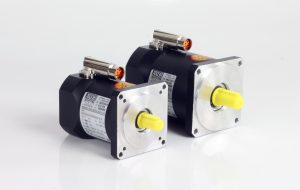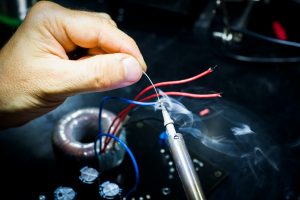What is the smallest speed increment you can set on a servo motor?
In our Technical Answers series, we address questions that have been put to us by customers regarding their real-life applications.
We’ve always sought to produce easy-to-understand articles that provide help and advice with every day servo and automation issues that will hopefully help all our customers. Our recent Back-to-Basics article on servo motors was a huge hit and ended up being published in Design Solutions magazine and other publications.
In this issue of Technical Answers we’re going to Vienna, to visit a company operating Fuji Techno Industries Super Metering Pumps, for which we are the European agents. The pumps are on a high precision dosing application and our customer wanted to know what the smallest speed increment is that could be set on the servo motors driving them.
The question was straightforward enough but, in reality, the answer is a little more complex and so we’re going to cover it in two parts. In this first part we’re going to look at what can be achieved with different motor/drive combinations and then in part two we’ll look at speed resolution. The two articles combined should provide a good understanding of the subject and the know how necessary to address the issue with confidence.
When designing a drive system, particularly for critical applications, there are a number of issues that might seem self evident or obvious but are fundamental to achieve optimum performance, efficiency and accuracy. One such issue is speed control and determining the smallest speed increments that can be set on a servo motor. This was the question put to us by our customer in Vienna operating the high precision metering pumps, but this is equally relevant to any industrial application where speed control is critical.
So, just as with our customer in Vienna, let us imagine you need a motor to drive a pump unit and provide a flow rate range from 0 to 500 mL/min. Due to the pump’s design the torque required to drive it over the flow rate range is relatively constant. You also wish to be able to adjust the flow rate down to 0.1 mL/min.
Browse more Technical Answers
You first need to consider the type of motor/drive combination best suited to the demands of your application. Simple Variable Frequency drive units quote speed control ranges down to as low as 1:40. Even more capable Open Loop Vector drives enable speed control ranges as low as 1:200. The thing is, using either of these options won’t give you the necessary control, as the Variable Frequency drive can only run down to 1:40 of its speed range, giving a minimum flow rate of 12.5mL/min. And, in the case of the Open Loop Vector drive the closest we could get would be 2.5mL/min. This is a crude example, but it makes the point.
You could consider a Flux Vector drive which utilises a feedback device (typically an encoder) on the motor to achieve a speed control range of 1:1000. This would get you much closer to the desired control sensitivity, but even at 0.5 ml/min we are still out by a factor of 5.
In general terms the speed control range of a servo system is not that much of a concern as it is substantially better than the other options mentioned here. Due to the closed-loop control methods and the synchronous, permanent magnet characteristics of the motor, we can achieve full torque at standstill, and, as a rule of thumb, full torque is available at up to 80% of the motors speed range with around 80% of the torque available up to the nominal speed of the motor. To put a figure on the speed control range, it is better than 1:5,000.
A simple calculation, 500ml/min ÷ 5000 = 0.1ml/min, indicates that the servo solution will meet the demands of the customer exactly. For this particular requirement it’s the obvious choice, but you may want to consider that this is also the most costly option in terms of initial purchase cost. The servo system does have other advantages though, including high efficiency, that may well be worth the extra initial investment.
Looking at the speed range of a drive system is only part of the issue when designing a system requiring the capability to control speed by small increments for precision applications. All servo drives are not the same and when you are involved with an application that has some critical performance requirements, you need to be aware of the differences.
One of the main issues is that the majority of drives available on the market, whether inverter or servo, are digital and all signals to the drive are converted to allow further processing. This conversion and its resulting data need to be understood before committing to a particular drive solution. To explain this we’ll stick with the same application we considered in part one, and the company in Vienna, operating the high-precision super metering pumps.
We know that the company’s engineers required a flow rate range of 0 to 500ml/minute, with the speed demand selectable in increments of 0.1ml/min. Let us imagine that the speed is to be controlled over a +/-10V analogue input.
There are a couple of things that need to be addressed. We will make the assumption that the signal provided over the analogue input is pure analogue. If it is not, you’ll have the same considerations to make on the equipment generating the signal as with the equipment receiving and processing the signal.
What do we mean by this? As an example, think back to the early days of radio, television, record players and even telephones. They were all pure analogue. The signal was only filtered, enhanced and amplified as it was passed from one component to another before it reached our eyes and ears. With analogue this occurs without the signal being chopped, manipulated, buffered overlaid and recompiled, as is the case with digital systems.
So how does this relate to our application? As already stated the company wants to run the pump at up to 500ml per minute, in increments of 0.1ml per minute.
Driving the pump input is a servo motor running at 3000rpm, through a 25:1 gearbox. The 3000rpm on the servo motor is, therefore, the factor ultimately controlling the flow rate of the pump.
But to achieve the smallest increment of 0.1ml/min, the pump’s cam shaft needs to be turning at 0.024rpm, which is 0.6rpm on the motor. This, in turn, means that the analogue signal (+/-10VDC) needs to be stepped in less than 2mV increments.
Can a servo drive handle such small variations? The short answer is yes, however it is dependent on the servo drive you are using. If the servo drive does not have a high-resolution analogue input, then you could be in trouble.
Let’s look at an example where the analogue input is 12-bit resolution. 12-bit resolution equates to 4,096 increments or approximately 2.5mV. So we don’t seem far off, but the first bit (the Most Significant Bit, or MSG) may be reserved for defining the direction (Positive or Negative), so our resolution is actually 11 bit for the speed portion of the signal or 5mV.
On this basis we need to select a drive with at least 14 bit (1.2mV) resolution to achieve the required minimum increment for the application. And remember, this also applies to the output of the equipment providing the demand signal in the first place.
There may be workarounds if your drive does not have an analogue input with a sufficiently fine resolution, such as using a digital interface (serial coms, fieldbus, etc). Some drives may offer the function of setting the input for a speed value without direction signal (eg. 0 to 10V), if you are only driving the motor in one direction, as we are doing on this pumping application.


